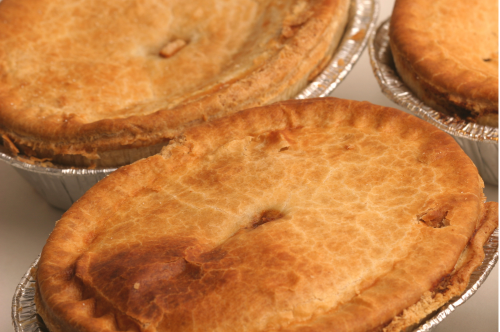
Pie category expected to continue to experience constraints
Although Covid-19 restrictions have been lifted and the pie category has seen some recovery, since the 15 – 20% decline in 2020, sales volumes are yet to recover to pre-pandemic levels.
Continued lockdown conditions, including limited operating hours and seating allowances at restaurants, growing unemployment and many people still working from home in 2021 meant that the category’s recovery was muted. According to Dr Dana Braithwaite, research consultant at BMi Research, a full recovery to pre-lockdown levels is not expected in 2022 either.
“Although pies remain an affordable and good value-for-money offering, the fact that the category has yet to recover to pre-pandemic levels illustrates just how constrained consumers continue to be and how little disposable income they have currently amidst a significantly increased cost of living including higher fuel and energy prices and consumer price inflation which rose to 5.9% in March, up from 5.7% in February,” says Braithwaite.
Although pies are a convenient meal replacement, the hot pies are typically an impulse buy and reliant on available disposable income, she adds.
As sales volumes fail to grow, pie manufacturers are under pressure as a result of factors that are largely out of their control such as persistent load shedding and higher input costs, she says, adding that the growth of larger players is therefore likely to be on the back of the closure of smaller players. There are a variety of reasons for the category’s slow recovery, she reveals. In South Africa the pie market is primarily driven by on-the-go consumers. The category was hard hit by lockdown restrictions which banned the sale of hot pies in 2020. Smaller pie manufacturers, many of which are family-owned and run businesses, were particularly hard hit. Many of those who focused solely on the manufacture of pies to be sold as hot pies have not survived.
Pie manufacturers that had the capacity to shift to producing frozen pies, or offered alternative products, had a better chance of survival, she says. “Bakeries that offered pies as part of a wider product range, for example, have come through the lockdown better than small producers that manufactured exclusively for outlets that sold hot pies.”
During this period new product development was put on the backburner and niche, premium-priced lower margin pies were removed from product ranges in favour of higher volume ranges. As input costs have risen and margins squeezed, pie producers have been cognisant of price sensitivity and have therefore adjusted pie sizes in an effort to avoid having to raise prices. While pies have traditionally come in three sizes – large, medium and small – volume share has shifted to smaller sizes, she reveals.
While garage forecourts continue to be a good retail channel for the pie industry, they are a relatively small channel compared to other pie outlets. Although they have the best growth potential of all pie retail channels even garage forecourts will find it hard to grow volumes in the current economic environment, she predicts.
“For the pie category to see a meaningful recovery will require economic growth so that consumers have more disposable income available. Consumers, however, are facing rapid increases in the cost of living. The April 2022 Household Affordability Index revealed that the average Household Food Basket increased in price by 8.2% compared to April 2021, and was up 2.1% between March and April this year alone. The rising cost of fuel, electricity, and cooking oil – the latter as a result of the war in Ukraine – combined with an unreliable power supply, don’t auger well for either pie manufacturers or consumers with all indicators pointing to the fact that the pie category’s recovery is likely to be slower than expected,” concludes Braithwaite.

